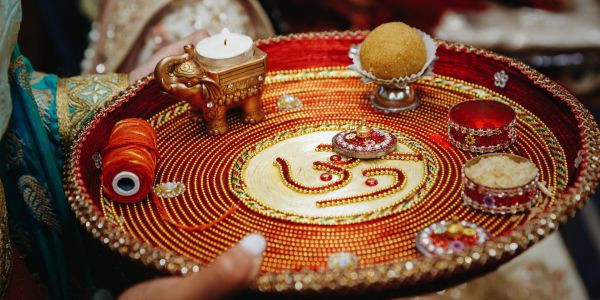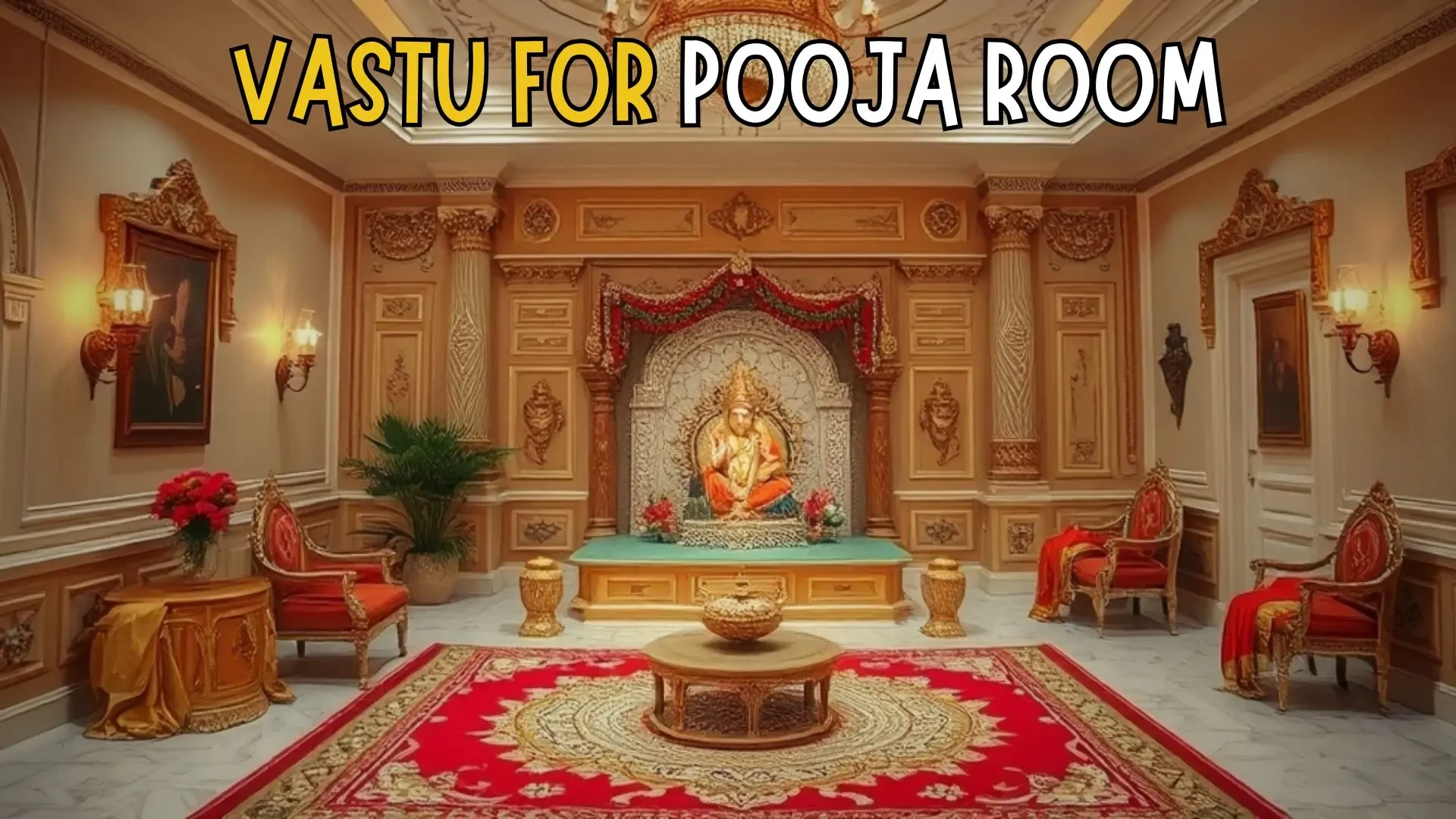POOJA ROOM VASTU
The pooja room is more than just a place for worship—it’s the soul of your home, radiating divine energy. But is it truly aligned with pooja room vastu principles to bring positivity, harmony, and prosperity into your life? Dive into the fascinating concepts of Vastu and learn how small but significant changes can transform your sacred space into a powerhouse of spiritual and emotional well-being.
Ideal Location for a Pooja Room

1. Direction and Placement
- An ideal location for a pooja room, according to pooja room vastu principles, is the northeastern sector of the house. This direction, called the Ishan Kona, is said to receive the maximum positive power or energy and is thus the perfect place for meditation.
- Otherwise, east or north directions could also be chosen.
2. Avoid These Locations
- It should not be located in the bedroom, kitchen, or below the stairway.
- It should never be built with an attached bathroom or constructed over or under one.
3. Separate Space
- Ideally, the pooja room vastu guidelines suggest that it should be a separate space or a room exclusively for a pooja room. If space is a limitation, then create a clean space cleared of unnecessary items as your worship space.
Design Principles for a Pooja Room
1. Door and Entrance
- As for the best design, the doorway to the pooja room should be present, preferably the door should be wooden to keep the room sacred and to protect it from the outside world.
- Those doors with Om, Swastik, or floral motifs make them lovers of spiritual touches.
2. Flooring and Walls
- Hardwood or marble should equally be used in floorings to enhance the serene environment.
- As for the wall colors, you can use either white, cream, or light yellow because these colors send a message of peace and positivity.
3. Ceiling and Lighting
- The ceilings should be clean and easy, and the lighting should be nice, and warm. Chandeliers or lamps should be used to add grace beautify the rest and amplify the sanctity of the place.
4. Idol and Deity Placement
- Whether this applies to idols or images of deities or not, the faces of those idols or images of deities shall be toward the east or west so that worshippers should also face east when worshipping.
- Do not place idols on the floor surface or flush with the surface.
Key Vastu Tips for Pooja Room
1. Sacred Geometry
- Keep a balance and offer similarity in construction and organization because symmetry is attractive.
2. Offerings and Storage
- Prayer items such as incense sticks, oils, and holy books should be put in special cabinets or drawers respectively. Make sure these are not cluttered.
- Use fresh flowers, and do not use stale or dried flowers at any one time.
3. Lighting and Ventilation
- Make sure the room is aired and exposed to sunlight, it cleans the air in the room.
- An hour before prayers display lamps or diyas placed in such strategic positions as to increase the amount of positive energy.
4. Auspicious Symbols
- It is always a good sign to put up wall hangings such as the Swastik or Om or even the representation of a Kalash – the sacred pot that brings prosperity to many Indian homes.
Common Mistakes to Avoid
1. Clutter
- Minimize clutter and other personal effects organize the pooja room and on no account place items that are not used in prayers.
2. Neglecting Maintenance
- Make sure the area is clean often to get rid of negative energies. When the place is dusty or the floor is dirty, the flow of positive energy can be interrupted.
3. Placement Errors
- Do not have idols confronting one another.
- Having too many idols or images will make the place too congested.
4. Dual Purpose
- Do not use the pooja room for other activities than prayers and rituals. It should stay for religious purposes only.
Enhancing Spiritual Practices
1. Meditation Corner
- It is recommended to locate in the premises a small area for carrying out meditations or practicing yoga if there is enough space. The choice of the slip should be a soft mat or cushion and this area should ideally be devoid of any distractions.
2. Sound Therapy
- When praying, try using bells, conch, or soft chanting music to help make the atmosphere as untroubled as possible.
3. Fragrance
- However, natural incense such as sandalwood or lavender, can be used to purify the environment and refresh the occupant's senses.
Pooja Room in Modern Homes
For compact homes or apartments, creating a pooja corner using Vastu principles is still possible:
1. Alternatively, they can use small wooden cabinets or shelves with curtains or doors to create the space.
2. Choose either foldable or movable units if possible for better and more convenient use.
3. The area should be clean and kept at a distance from other normal functioning of the home.
Benefits of Following Pooja Room Vastu

1. Spiritual Growth
- It is important to understand that a carefully planned pooja room helps maintain a daily prayer and or meditative practice to imbibe spirituality.
2. Positive Energy
- Living by Vastu Shastra enhances the positive energy in the home, so the pooja room should be Vastu compliant.
3. Family Harmony
- People living in a Vastu-compliant pooja room can practice regular prayers to enhance the couple’s bond or seek harmony among the family.
4. Prosperity and Health
- Good health, prosperity, and success are drawn by the sacred vibrations produced in a clean pooja room at all times.
Conclusion
It is a room solely dedicated to a pooja, but spiritually it is a house for the soul. With the help of pooja room vastu tips, you can design and create this space to provide positivity, peace, and blessings in your home. Whether you live in a big house or a small apartment, good planning and care will help turn a pooja room into the spiritual focus of a home.






